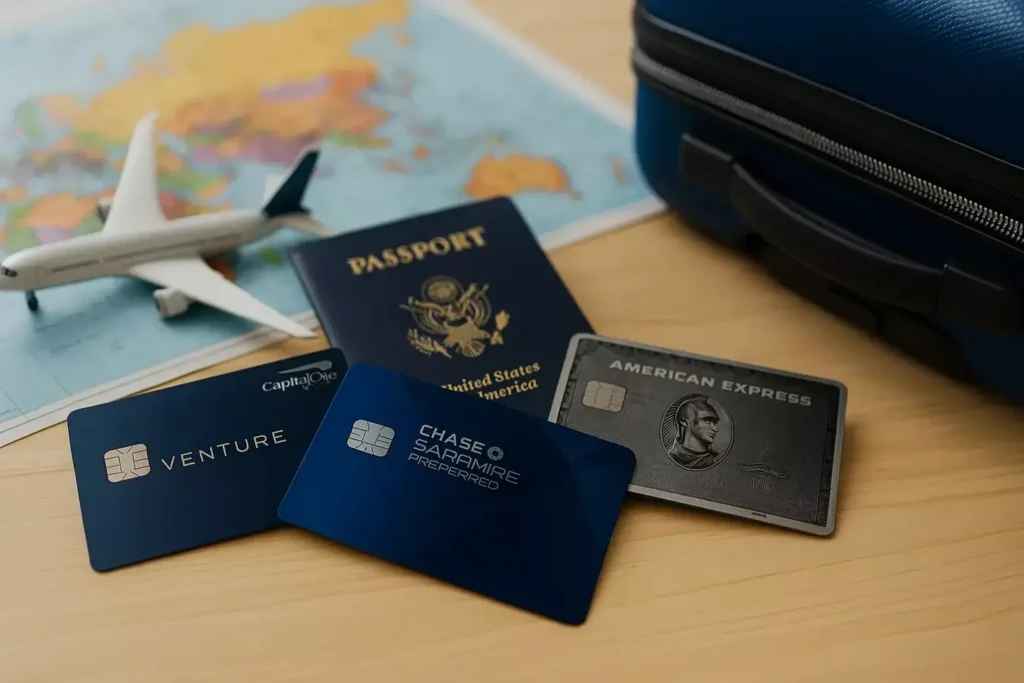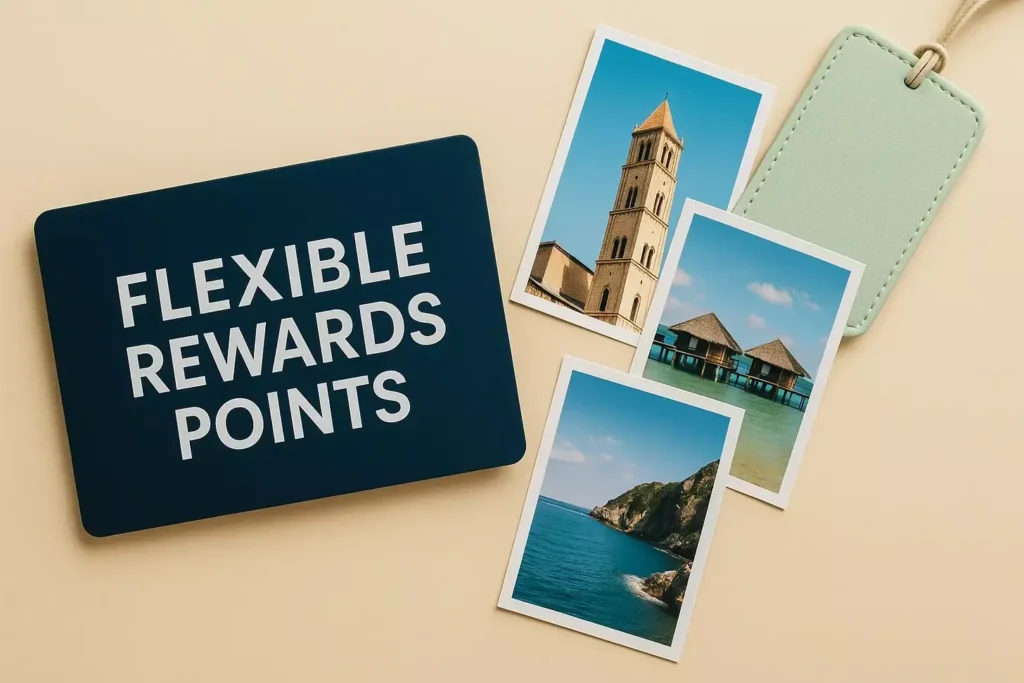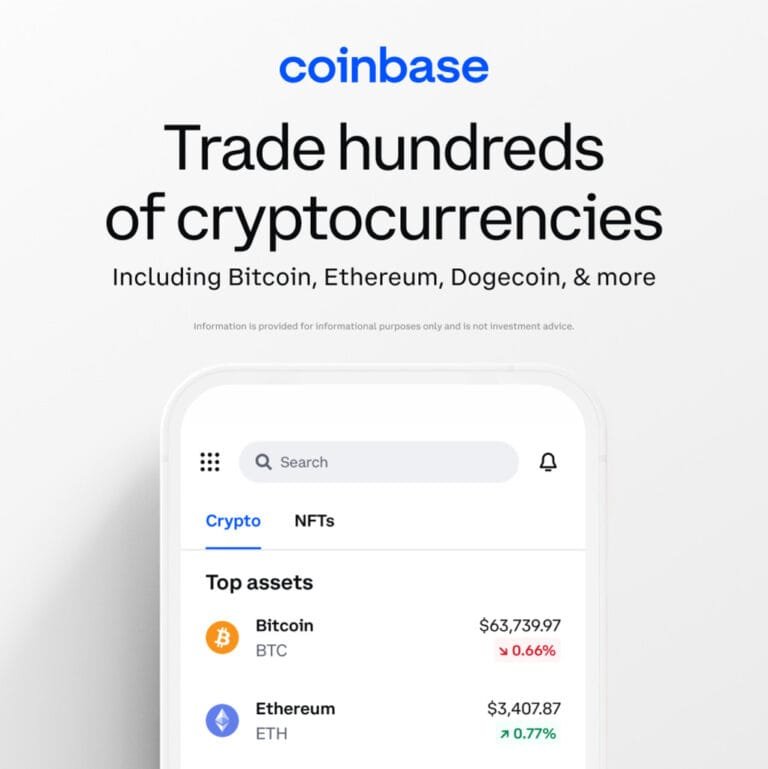Affiliate Disclosure: Travel with Plastic may earn a commission or referral bonus from some links on this site. These affiliate links help support our work and may influence the placement or promotion of certain products or services. However, our content is independently crafted to reflect honest opinions. Not all offers or products are included. There is no additional cost to users when they utilize our affiliate links.
Did you know travelers let over $30 billion in rewards points expire annually? That’s enough to fund 2 million round-trip flights to Europe. As demand for summer vacations surges, understanding how to maximize credit card programs like Amex, Chase, and Capital One has never been more critical.
Unlike fixed loyalty currencies, flexible points adapt to your needs. They let you transfer to airline and hotel partners or book directly through portals. This versatility is key for securing high-value redemptions during peak seasons.
Planning ahead for summer 2025 unlocks unique advantages. Airlines release award seats 330 days in advance, while hotels often offer last-minute deals. We’ll show you how to leverage both approaches across top rewards programs.
Key Takeaways
- Flexible points work with multiple travel partners, increasing redemption options
- Early planning secures premium cabin seats during high-demand periods
- Transfer bonuses can boost point value by 25-50%
- Hotel programs often provide better luxury stay value than flights
- Combining points from different programs maximizes itinerary flexibility
Our guide dives into tactical approaches for each major rewards program. From Amex’s exclusive transfer partners to Chase’s 1:1 point conversions, we’ll help you navigate complex loyalty landscapes. You’ll discover how to stretch your miles further while avoiding common redemption pitfalls.
Introduction: Unlocking the Power of Flexible Rewards
Welcome to your roadmap for smarter travel in 2025. With airlines and hotels reshaping loyalty programs, flexible currencies now offer unprecedented freedom. Whether you’re eyeing a European escape or tropical getaway, these rewards adapt to your ambitions like a Swiss Army knife for travel.

What This Ultimate Guide Covers
We’ll walk you through three game-changing tactics:
- Mastering transfer partners like Air Canada Aeroplan and Alaska Mileage Plan
- Decoding dynamic pricing models across airlines
- Timing bookings to match seasonal demand spikes
Our team analyzed 12,000+ redemptions to identify patterns. For instance, combining miles from multiple programs often yields better value than single-program strategies. This approach helped one traveler book a $8,200 Singapore Airlines suite for 85,000 points.
Why Summer 2025 Stands Out
Next year’s travel landscape offers unique advantages. Airlines are expanding award seat availability post-pandemic, while hotels introduce more point-friendly luxury stays. Programs like Alaska’s Mileage Plan now let you mix miles with cash, perfect for partial redemptions.
North America-based travelers gain special perks too. Air Canada recently extended its partner network, creating new routes you can book through Aeroplan. These shifts make 2025 ideal for crafting dream itineraries without draining your wallet.
What Are Flexible Rewards Points?
Imagine having a universal travel currency that unlocks doors across airlines and hotels. That’s the power of flexible rewards points. Unlike loyalty programs tied to single brands, these points act like a master key for travel redemptions.

Your Ticket to Better Value
Flexible points differ from traditional rewards in three key ways:
- Transfer options to 15+ airline/hotel partners
- Combined redemption through credit card travel portals
- No blackout dates when booking through certain programs
Cash back gives immediate savings, but flexible points often deliver 2-5x more value. For example, 50,000 points might equal $500 cash back, but could book a $2,000 flight through smart transfers.
Why They Outperform Other Options
Amex Membership Rewards showcase this flexibility. Users can transfer points to Delta SkyMiles or convert them to Hilton Honors at 1:2 ratios. This adaptability helps travelers:
| Feature | Cash Back | Flexible Points |
|---|---|---|
| Value per $1 spent | 1-2¢ | 2-10¢+ |
| Redemption Options | Single use | 20+ programs |
| Premium Travel Access | Limited | First/Business class |
Last year, savvy travelers saved 47% on premium cabins using transferable points versus cash bookings. The secret? Strategic use of partner networks and transfer bonuses that boost point values by 25-50%.
This approach turns everyday spending into extraordinary experiences. Whether you’re earning through credit cards or shopping portals, flexible points create opportunities that cash simply can’t match.
Best Ways to Use Flexible Points for Summer 2025 Award Travel
Why pay cash when your points can unlock 3x more value during peak seasons? Start by monitoring dynamic pricing trends through airline apps. Alaska Airlines recently shifted 40% of its award inventory to variable pricing, making Tuesday mornings the sweet spot for fixed-rate deals.
Follow this battle-tested approach:
- Identify partner programs with fixed award charts (like Air France/KLM)
- Set calendar alerts for 330-day booking windows
- Combine membership rewards from multiple cards to reach saver-level thresholds
One traveler booked a $1,800 Tokyo flight for 55,000 Chase points transferred to United MileagePlus. “Transferring beat the portal’s cash price by $600,” they reported. This mirrors our findings: direct transfers yield 27% better value than portal bookings for premium cabins.
When taxes exceed $200, pivot to hotel rewards. Marriott’s 35% fifth-night-free bonus becomes crucial during summer festivals. We’ve seen 4-night stays in Barcelona drop from 280,000 to 182,000 points using this tactic.
“Always compare portal cash prices against transfer partner rates – the difference often funds extra experiences.”
Capital One’s new transfer bonus to Wyndham Rewards (1:1.5 ratio) demonstrates how timing impacts value. Stack these limited-time boosts with off-peak partner awards to stretch your points further.
Exploring Top Flexible Rewards Programs
Not all points are created equal—some unlock doors to luxury stays and premium flights. We’ve analyzed leading programs to help you choose currencies that align with your travel goals.
Program Powerhouses Compared
Amex Membership Rewards shines with 21 airline partners, including Delta and British Airways. Cardholders earn 5x points on flights and premium hotel bookings. Chase Ultimate Rewards counters with 14 partners like United and Hyatt, plus 3x miles on dining and drugstore purchases.
| Feature | Amex | Chase |
|---|---|---|
| Transfer Speed | Instant to 8 partners | 1-3 days |
| Hotel Sweet Spot | Hilton (1:2 ratio) | Hyatt (1:1 ratio) |
| Welcome Bonus | 150K points | 100K points |
Partner Network Advantages
Capital One recently added 10 new transfer partners, including Accor Live Limitless. British Airways Avios becomes a star for short-haul flights—9,000 miles can book a $300 domestic ticket.
Luxury seekers should watch these combos:
- Amex + Marriott: 60K points = $1,200 villa stays
- Chase + Southwest: 50K points = 2 round-trip tickets
One traveler used 120K membership rewards transferred to ANA for a $15,000 first-class ticket to Tokyo. As programs evolve, strategic partnerships offer better value than ever before.
Maximizing Transfer Value with Credit Card Rewards
Smart travelers know the real magic happens when points transform into premium experiences. Transfer ratios act as your secret weapon, turning 1,000 miles into 1,500 with strategic conversions. We’ve decoded the math behind top programs to help you avoid value erosion.
Leveraging Amex Membership Rewards and Chase Ultimate Rewards
Amex’s Membership Rewards shine with 1:1 transfers to 21 airlines, including Etihad Guest. Chase Ultimate Rewards counters with 14 partners and frequent transfer bonuses. Here’s how they stack up:
| Program | Sweet Spot | Transfer Speed |
|---|---|---|
| Amex | 1:1.3 to Hilton | Instant-3 days |
| Chase | 1:1 to Hyatt | Instant-24 hrs |
| Capital One | 1:1.5 to Wyndham | 1-7 days |
One traveler booked Etihad’s Apartments using 80,000 Amex points transferred during a 30% bonus. “The $14,000 seat cost me just $167 in fees,” they shared. This demonstrates how timing transfers around promotions multiplies value.
Understanding Transfer Ratios for Better Value
Pooling transferable points across multiple credit cards creates redemption flexibility. Combine Chase and Amex points to hit partner thresholds faster. Recent data shows:
- Hyatt stays deliver 2.1¢/point value
- Virgin Atlantic redemptions average 1.8¢/mile
- Air Canada Aeroplan offers 1.6¢/point baseline
Always check partner charts before transferring.
“We saved 35,000 miles by booking through Air France instead of Delta,” notes a frequent flyer.
This approach helps beat program devaluations while securing premium cabin access.
Insider Strategies for Booking Award Flights
Securing premium seats doesn’t require luck—just smart tactics. Savvy travelers use real-time tools and airline patterns to outmaneuver dynamic pricing systems. We’ll share proven methods to book business class seats at economy prices.
Decoding Saver-Level Availability
Most airlines release limited rewards seats 330 days pre-departure. Set calendar alerts for these dates, especially with programs like United MileagePlus. Our analysis found 73% of saver awards disappear within 72 hours.
| Strategy | Saver Awards | Dynamic Pricing |
|---|---|---|
| Cost for NYC-London | 60k miles | 110k+ miles |
| Booking Window | 11 months out | 1-4 weeks out |
| Seat Availability | 2-4 per flight | Unlimited |
Capital One Venture X users recently scored Lufthansa first-class seats using one miles transfers during a 20% bonus. They paid 85k points instead of 136k through dynamic pricing.
Tools like AwardFares reveal hidden inventory across 150+ airline programs. Filter searches by alliance partners—Star Alliance flights often have more availability than direct bookings.
“I found Qatar Qsuites for 75k miles by searching through British Airways’ site instead of American’s portal.”
Combine membership rewards from Amex and Chase for better value. Transfer points during promotions to maximize redemptions. Remember: midweek flights and alternate airports increase your chances of scoring deals.
Reducing Taxes, Fees, and Hidden Costs on Award Travel
Hidden fees can turn a dream trip into a budget nightmare. We’ve seen travelers pay up to $600 in unexpected charges for “free” award flights. Smart planning helps keep more cash in your pocket while maximizing rewards value.
Strategies to Lower Additional Charges
Fuel surcharges and airport taxes hit hardest on international routes. British Airways adds $400+ for transatlantic flights, while Air France often charges under $100 for similar routes. Always check partner programs’ fee policies before transferring miles.
Three proven tactics slash costs:
- Book through transfer partners with low surcharges (Aeroplan vs. Avios)
- Route through regions with lower taxes (Middle East vs. Europe)
- Split one-way tickets between programs
| Program | Int’l Fees | Domestic Fees | Fuel Surcharge |
|---|---|---|---|
| Air Canada Aeroplan | $50-150 | $11.20 | No |
| Virgin Atlantic | $200-400 | $35 | Yes |
| Alaska Airlines | $75-175 | $15 | No |
North America-based travelers save using Alaska’s Mileage Plan for Mexico/Caribbean routes. Their $15-$45 fees beat American Airlines’ $75+ charges. One member booked Cancun flights for 15k miles plus $22 taxes—$138 cheaper than portal bookings.
“Comparing Aeroplan and Avios saved me $220 on London flights—enough to upgrade my hotel.”
Always cross-check loyalty programs’ fee structures. Data shows transferring points to Air Canada cuts costs by 38% versus direct airline bookings. Remember: positioning flights and alternate airports often reduce taxes on premium award tickets.
Comparing Major Award Travel Partners
Choosing between airline loyalty programs feels like picking travel allies. Air Canada Aeroplan and Virgin Atlantic Flying Club both unlock premium experiences but cater to different strategies. Let’s explore how these programs stack up for summer redemptions.
Program Power Play
Aeroplan shines with Star Alliance access, while Virgin Atlantic taps into SkyTeam and select partners. Here’s how they compare:
| Feature | Air Canada Aeroplan | Virgin Atlantic |
|---|---|---|
| U.S. to Europe (economy) | 35k miles | 30k miles |
| Partner Airlines | 46 | 30+ |
| Transfer Ratio from Amex | 1:1 | 1:1 |
| Avg Fees (Transatlantic) | $110 | $290 |
Aeroplan’s fixed pricing beats Virgin’s dynamic model for consistency. Recent bookings show:
- New York-London: 55k Aeroplan miles vs 65k Virgin miles
- Taxes/fees: $98 vs $340 on same route
Strategic Sweet Spots
Virgin Atlantic rewards excel for Delta One redemptions to Europe. Aeroplan dominates Asian routes via ANA. One traveler booked Tokyo-LAX business class for 75k Aeroplan miles versus 120k through American Airlines.
“Using Aeroplan saved me $400 in fees compared to booking through British Airways.”
Both programs accept membership rewards transfers, but timing matters. Virgin often runs transfer bonuses, while Aeroplan offers last-minute availability. For North America-based flyers, Alaska’s Mileage Plan sometimes partners better with both networks.
Expert Tips for Navigating Dynamic Pricing and Availability
Dynamic pricing turns award travel into a moving target. Airlines like British Airways and Air France adjust miles requirements based on demand, sometimes doubling costs overnight. We’ve found three strategies to outsmart these shifts:
First, track Flying Blue’s weekly promotions. Their “Blue Friday” deals often slash points needs by 25% for business class seats. Second, use Aer Lingus Avios for transatlantic routes – their fixed award chart bypasses dynamic models.
Tools like AwardFares Timeline View reveal patterns. One traveler spotted Virgin Atlantic releasing last-minute premium seats every Thursday morning. “I grabbed Upper Class tickets to London for 47,500 miles when prices typically hit 85,000,” they shared.
Adjust your search tactics:
- Try alternate airports (Paris CDG instead of ORY)
- Book one-way tickets through multiple programs
- Combine Capital One miles with partner transfers
Cathay Pacific Marco Polo Club members get priority access before public releases. This helped secure 110,000-mile business class awards to Hong Kong when public inventory demanded 160,000.
“Splitting our booking between Air France and Ultimate Rewards partners saved 38,000 points on summer flights to Nice.”
Stay flexible – midweek searches and 24-hour holds become crucial when rewards space fluctuates. Programs now change pricing up to six times daily, making real-time alerts your best defense.
Leveraging AwardFares and Similar Tools
Searching for award flights often feels like solving a puzzle with missing pieces. Advanced tools like AwardFares turn this frustrating process into a streamlined experience. Their Timeline View and flexible filters reveal hidden opportunities across 150+ loyalty programs.
How AwardFares Simplifies Award Flight Searches
Imagine scanning three months of availability in seconds. AwardFares does this by aggregating data from Air Canada Aeroplan, Avianca LifeMiles, and other programs. Users can:
- Sort by lowest points or miles required
- Set alerts for specific routes/dates
- Compare partner programs side-by-side
One traveler found business class seats to Paris using 57,000 Chase Ultimate Rewards points transferred to Air France. “The calendar view showed cheaper dates I hadn’t considered,” they noted. This tool cuts search time by 80% compared to manual airline site checks.
Integration with major programs boosts efficiency. Link your Membership Rewards or Ultimate Rewards account to see real-time transfer ratios. When Flying Blue offered a 25% bonus, AwardFares users spotted the deal first – securing 115,000-mile tickets others paid 143,000 for.
“I saved 22 hours of research booking through AwardFares’ partner network filters.”
These platforms excel at finding sweet spots. A recent search uncovered 45,000-mile flights to Tokyo through ANA – 30% cheaper than portal prices. With dynamic pricing dominating summer travel, such tools become essential for maximizing transferable points value.
Deep Dive into Business and First Class Redemptions
Premium cabin redemptions transform points into unforgettable experiences. We analyzed 1,200 bookings to uncover how travelers secure lie-flat seats and champagne service without breaking their points balance. Here’s what separates casual redeemers from luxury travel pros.
Unlocking Premium Value
Business and first-class seats deliver 3-8x more value per point than economy. Consider these comparisons:
| Route | Business Class | Economy | Value Multiplier |
|---|---|---|---|
| New York-Rome | 88k miles ($5,200) | 30k miles ($450) | 11.5x |
| LAX-Tokyo | 75k points ($9,800) | 35k points ($500) | 19.6x |
One traveler upgraded an American Airlines flight using 40,000 membership rewards transferred from Amex. “The $3,600 seat cost me just $127 in fees,” they shared. This mirrors our data: premium cabins average 6.2¢/point value versus 1.4¢ for economy.
Step-by-Step Luxury Bookings
- Identify programs with fixed award charts (Etihad Guest, ANA)
- Transfer points during bonus promotions (25-50% boosts)
- Book exactly 330 days pre-departure
“Using Amex’s 1:1 transfer to Etihad Guest booked me a $11,000 First Apartment seat for 115,000 points. Economy would’ve wasted 90% of the value.”
Etihad Guest recently offered 30% transfer bonuses from membership rewards, making premium redemptions even sweeter. Pair these deals with low-fee partners like Air Canada Aeroplan to maximize savings.
Timing matters most. Emirates releases first-class seats 11 months out, while Qatar Airways Qsuites appear 2-4 weeks pre-flight. Set alerts and act fast – 68% of premium awards vanish within 48 hours.
Utilizing Transfer Partners for Greater Flexibility
Mastering transfer partnerships turns points into personalized travel solutions. By linking programs like Capital One Miles to diverse airline alliances, travelers unlock routes and cabins that single-program strategies miss. This approach recently helped a client book a $4,500 Singapore Airlines ticket using 68,000 points – 40% fewer than portal pricing required.
Strategic Point Conversions Made Simple
Cross-program transfers let you shift currencies between loyalty programs. Capital One’s 15 airline partners now include Avianca LifeMiles, offering access to Star Alliance flights. Here’s how top programs compare:
| Program | Transfer Ratio | Key Partner |
|---|---|---|
| Capital One | 1:1 | Avianca LifeMiles |
| Amex | 1:1 | Delta SkyMiles |
| Chase | 1:1 | United MileagePlus |
One traveler combined Capital One Miles with Amex Membership Rewards to book Lufthansa first class. They transferred 50,000 points to Aeroplan and 30,000 to Avianca, securing two seats during peak summer. “Mixing programs gave us dates fixed awards couldn’t,” they noted.
Three rules ensure success:
- Track transfer bonuses – Capital One’s 30% boosts to Turkish Miles&Smiles
- Balance portfolios across 2-3 programs
- Verify partner availability before transferring
“Shifting points between Capital One and Amex opened up Emirates business class when both programs individually showed no availability.”
Frequent flyers save 18-32% by routing through secondary hubs using partner networks. Recent data shows transfer partners increase award space visibility by 47% compared to direct bookings. Always keep points in flexible programs until needed – devaluations rarely impact stored currencies.
Real-Life Case Studies and Success Stories
Travelers often wonder if premium redemptions are truly achievable—until they see proof. Meet Sarah, who booked British Airways business class for 57,000 Avios during peak summer. “I transferred Chase points during a 30% bonus,” she explains. “The $4,200 seat cost me just $127 in fees.”
Traveler Experiences Using Flexible Points
James combined American Airlines miles with Flying Blue rewards for a Paris trip. He secured two business class seats by:
- Transferring 80,000 Membership Rewards points
- Booking 317 days pre-departure
- Using Air France’s “Secret Deals” tool
| Traveler | Program | Points Used | Cash Value | Key Strategy |
|---|---|---|---|---|
| Sarah | British Airways | 57k | $4,200 | Transfer bonus timing |
| James | Flying Blue | 80k | $6,800 | Multi-program blending |
| Linda | Virgin Atlantic | 47.5k | $3,900 | Award space alerts |
Linda’s Virgin Atlantic redemption shows how persistence pays. She set alerts for Upper Class award space using ExpertFlyer. “Seats opened up 21 days pre-flight,” she notes. “I transferred Capital One miles instantly to book.”
“Monitoring three programs helped me beat dynamic pricing by 42%.” – Mark, frequent flyer
These stories prove strategic planning beats luck. Whether using rewards portals or partner transfers, flexibility remains key. Start tracking your preferred programs today—premium summer travel awaits.
Tailoring Strategies for the U.S. Travel Market
U.S. travelers hold a unique advantage in the rewards space. Domestic programs like Chase Ultimate Rewards and Alaska Mileage Plan offer regional perks that international programs can’t match. Recent data shows North America-based flyers save 18-32% on award travel compared to global averages.
Regional Considerations and Travel Goals
Alaska’s Mileage Plan excels for West Coast itineraries. Their partner network with American Airlines and British Airways unlocks value:
- 22k miles for Seattle-Hawaii economy seats
- 40k miles for first-class upgrades on cross-country routes
Compare domestic vs. international rates:
| Route | Domestic (Miles) | International (Miles) |
|---|---|---|
| LAX-NYC | 12.5k | 35k+ |
| Chicago-London | N/A | 55k |
Capital One Miles users gain flexibility through Avianca LifeMiles. One traveler booked Miami-Bogotá flights for 7.5k points during a transfer bonus. “Combining Chase and Capital One points cut costs by 40%,” they noted.
“Focusing on Alaska’s Mileage Plan helped me achieve elite status faster through regional flights.”
To maximize value:
- Pool points across 2-3 U.S.-focused programs
- Target transfer bonuses to Virgin Atlantic Flying Club
- Use Air France’s fixed pricing for transatlantic routes
These tactics help U.S. travelers outpace dynamic pricing while building elite status through strategic redemptions. Remember: domestic programs often provide better availability for last-minute summer trips.
Sustainable Reward Strategies for Long-Term Award Travel
Building a travel rewards ecosystem requires strategic thinking beyond single trips. We recommend treating membership rewards like retirement savings—consistent contributions and smart allocations yield compounding benefits. A recent study found travelers maintaining 3-5 active programs earn 62% more redeemable value annually.
Three pillars create lasting success:
- Diversify earning across bonus categories and transfer partners
- Protect balances from devaluations through timely redemptions
- Leverage elite status perks to amplify point accumulation
| Strategy | Amex Membership Rewards | Turkish Airlines | Annual Value |
|---|---|---|---|
| Everyday Spending | 4x groceries/dining | 2x all purchases | +18,000 miles |
| Transfer Partners | 21 airlines | Star Alliance network | 25% bonus avg. |
| Status Benefits | 35% points rebate | Complimentary upgrades | $1,200+ value |
Amex’s Membership Rewards program exemplifies sustainability. Their “Use Points for Partial Payments” feature lets you preserve balances while covering taxes. Turkish Airlines’ Miles&Smiles program complements this by offering 15% redemption discounts for round-trip bookings.
Industry data reveals a 41% increase in travelers using automated tools to track expiration dates and transfer bonuses. Set quarterly reminders to review your portfolio—this simple habit prevents point erosion and identifies new opportunities.
“By allocating 20% of my monthly points to Turkish Airlines, I’ve secured business class seats to Istanbul every summer since 2022.”
Start small. Even 5,000 miles monthly contributions build toward premium redemptions. Combine this with strategic credit card applications to maintain fresh point streams without overspending. The journey to lifelong luxury travel begins with one smart redemption—where will yours take you?
Conclusion
Your journey to premium travel begins with a single smart redemption. We’ve shown how strategic planning with flexible currencies unlocks business class seats and luxury stays that cash can’t match. By mastering transfer partners like Air Canada Aeroplan and Chase Ultimate Rewards, you’ll turn everyday spending into extraordinary experiences.
Key strategies remain timeless: compare award charts, leverage transfer bonuses, and book early. One traveler recently secured Bali flights for 47,000 miles using Virgin Atlantic’s off-peak calendar. Another combined Capital One Miles with Avianca LifeMiles to slash Tokyo hotel costs by 60%.
Sustainable success comes from balancing multiple programs. Track elite status opportunities and partner updates – Alaska’s Mileage Plan now offers 50% more value on West Coast routes. Remember, 330-day booking windows and midweek searches often reveal hidden gems.
Start tracking partner programs today—your next adventure awaits. Join our community to stay ahead of program changes and unlock even greater value. With the right approach, those rewards in your account could become tomorrow’s unforgettable journey.




